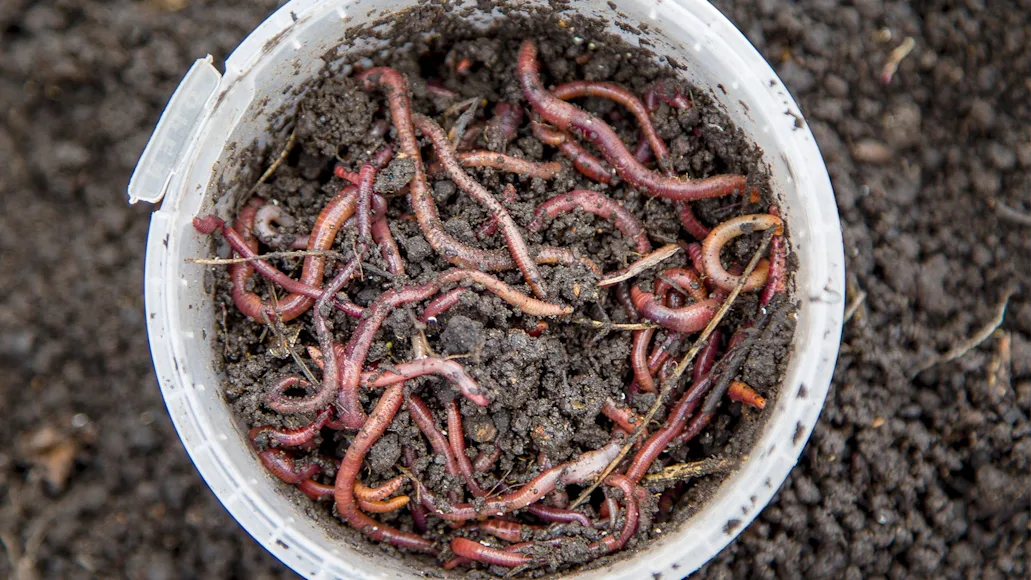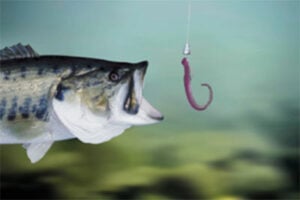The 30-Second Trick For Where To Find Red Wigglers
The 30-Second Trick For Where To Find Red Wigglers
Blog Article
Some Ideas on Where To Find Red Wigglers You Should Know
Table of Contents10 Easy Facts About Where To Find Red Wigglers ShownSome Known Details About Where To Find Red Wigglers Where To Find Red Wigglers - QuestionsThe 8-Second Trick For Where To Find Red WigglersSee This Report about Where To Find Red WigglersThe Facts About Where To Find Red Wigglers Revealed
For finest results, you wish to aim for about 60-70% moisture degree. The easiest examination for this is to press a handful as difficult as you can. At the excellent wetness levels which is just under 70% that handful ought to hardly generate one decline of liquid. pH in a worm bin is pretty easy to maintain.
The Indian Blue is starved, but also prefers a warmer climate and it likewise displays a tendency to get away the bin. The red wiggler is a sturdy worm and isn't as choosy about its climate. I like to call it the Ford Taurus of vermicomposting worms; you won't brag to your hardcore composting buddies that you own them, yet they will serve you well.
As Faucet showed, an angler can do a good bargain to make a worm more appealing.
Top Guidelines Of Where To Find Red Wigglers
I assume you will certainly also if you attempt them. The smaller the trout stream, the better worms work is an axiom that hasn't transformed in the 100-plus years considering that Perry wrote his article. Fishermens of his age merely stuck their weak fishing pole via alder tangles and went down a heavy worm right into a deep hole.
Early morning is prime feeding time, and the weightless bait's slow descent leaves 5 inches of agonizing protein completely view for a long time. After you have actually made the actors, maintain the bond open and put the pole in a forked stick. The line will certainly fall off the rod in sluggish loopholes as the worm resolves, but typically the slow-moving loopholes will come to be a blur, and the morning will all of a sudden obtain instead interesting.
You can fish deep and cover a whole lot of territory, and the crawler seems to be the excellent touch for this transitional time, when the smallmouths have yet to secure on to a preferred forage. Dark jigsblack, brownish, and purpleseem to match the nightcrawler's shade. I usually use a whole 'spider, like marabou dressing, and drop the pole for two or three secs when I obtain a hit.
If it's there, established the hook with a move instead than a jerk. Once in a while you'll find yourself hooked to those sluggish, hearty tugs, and feel the weight of a great walleye.
6 Easy Facts About Where To Find Red Wigglers Explained
When the hefty walleyes carry on to the big-water shoals in the late summer useful link season, attempt going after them with a bucktail jig and a 1-inch pinch of nightcrawler. The bait covers the hook factor, deflects weeds, and uses a taste of target. With nothing dangling or waving, it remains safe and secure no matter existing, casts, or ambitious panfish.
Whether you're wading or angling from a watercraft, wandering worms is among the excellent searching strategies for bigger rivers. For trout, a spade-dug, 4-inch yard worm is the best dimension; for bass, walleyes, and steelhead, a nightcrawler might be a much better choice. The secret is to drift the bait with feeding and holding locations because fish in existing are not going to ferret out the lure, as they could in still water.
Strikes will certainly come as a sharp tug as opposed to a pull or rap. Fish the changes: mouths of tributaries, bank-side slicks, and the edges of huge swimming pools. As the late Ed Zern, Area & Stream's fantastic humorist, once placed it: Fishermens are born sincere yet they obtain over it. His dictum applies to any kind of variety of angling maneuvers, consisting of the matter of adding a piece of worm to a damp fly.

Getting The Where To Find Red Wigglers To Work
Add a few hundred worms and feed them two times a week. Keep the bedding wet however not wet. On the menu: lettuce, fruit and veggie check that waste, and the periodic nongreasy surplus.
Simply like veggie scraps, you can take your used coffee grounds and add them to a worm box. Worms enjoy consuming coffee grounds.
When the hefty walleyes go on to the big-water shoals in the late summer, try going after them with a bucktail jig and a 1-inch pinch of nightcrawler. The lure covers the hook point, disperses weeds, and uses a preference of victim. With nothing dangling or waving, it remains protected no matter existing, casts, or ambitious panfish.
Unknown Facts About Where To Find Red Wigglers
Whether you're wading or fishing from a boat, wandering worms is among the terrific browsing approaches for bigger rivers. Where To Find Red Wigglers. For trout, a spade-dug, 4-inch yard worm is the ideal great site dimension; for bass, walleyes, and steelhead, a nightcrawler might be a much better option. The trick is to drift the lure through feeding and holding areas because fish in current are not mosting likely to ferret out the lure, as they may in still water
Fish the shifts: mouths of tributaries, bank-side slicks, and the edges of huge swimming pools. His dictum applies to any kind of number of angling maneuvers, including the matter of including a piece of worm to a wet fly.
Elevating your own lure means you can slip out of the house and hit the pond prior to Mother comes homejust like in the old days. Here's just how to keep a worm box: Cut a sheet of CDX-grade plywood, which is made with water-resistant adhesives, to your measurements. Accomplish with each other and drill a lots 12-inch openings in all-time low for water drainage.
Where To Find Red Wigglers Can Be Fun For Everyone
Add a few hundred worms and feed them 2 times a week. Keep the bed linen wet but not damp. On the food selection: lettuce, fruit and veggie waste, and the periodic nongreasy surplus (Where To Find Red Wigglers).
Similar to veggie scraps, you can take your made use of coffee premises and add them to a worm box. Worms like eating coffee grounds. With the ideal problems and damp, healthy and balanced soil, worms can live in a pail of dust for around 3 weeks. Store out of straight sunlight and maintain a temperature between 50 and 80 degrees.
Report this page